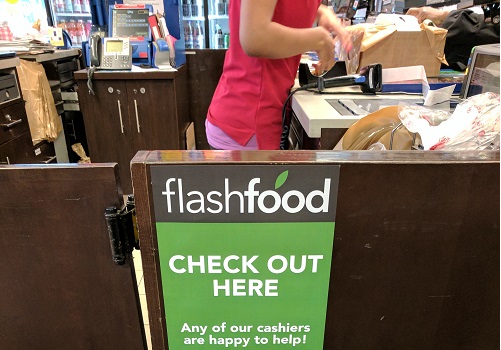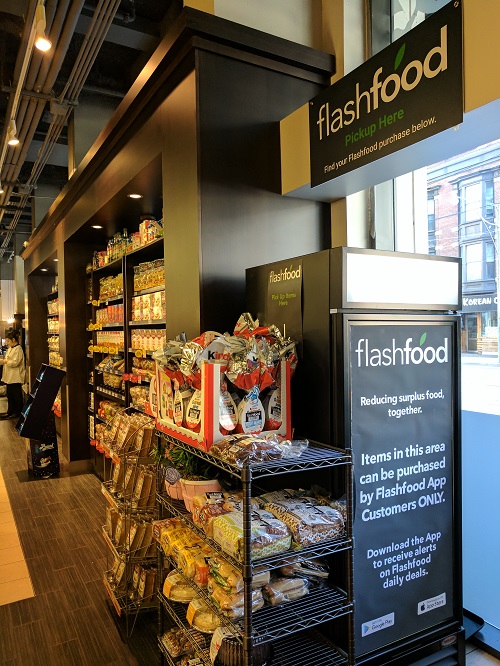One third of the world’s food – 1.3 billion tons – ends up in a landfill every year. But Josh Domingues is determined to change that with Flashfood, an app that allows grocery stores and restaurants to sell high-quality, surplus food at steep discounts. Not only can shoppers save money, vendors see an increase in revenue while the environment benefits too.
We recently had the chance to speak with Domingues about the innovative app, his fascination with food security and his vision for Flashfood.
Tell us about you and what inspired you to start Flashfood?
My sister, who was a chef, let me know how much food was constantly being thrown out at her events and in their kitchen. It wasn’t until I stumbled across a National Geographic article in 2016 that i realized the horrible environmental effects of food waste.
When food gets thrown out, it usually ends up in a landfill and rots without any oxygen. This produces methane gas. The stat that changed my life was, “If international food waste were a country, it would be the third leading cause of GHG emissions behind the US and China.” That’s when I decided this was a problem i had to solve. I didn’t think anyone was solving this the right way.
This all happened in February 2016. i quit my job on Bay Street in finance and have been building the team, tech and company since then.
What is Flashfood, where is it “available” and how does it work?
Flashfood is a mobile platform allowing grocery stores to upload deals of their surplus food directly to our community.
Our users get notifications in the morning of food deals that have been posted. Our users see the deal through their phone, pay through their phone and pick their food up at the store any time – same day. After you’ve made your order, you show up at the store and pick up your purchase in the Flashfood zone. Since the food has already been paid for, it’ll be waiting for you there. Then you just walk through checkout like normal where the cashier will confirm your pick up in person.
We’re live right now in downtown Toronto at Longo’s (Bay and Dundas location) and in London, Ontario at Farm Boy, with hopefully more of their locations to come online soon.
What are the greatest challenges you face?
Initially, it was very challenging to bring grocery stores online. We have to meet with the executives and the sales cycle has to go top down. Now that we’ve successfully implemented into two of the top privately owned chains in the country and are beginning to scale with them, the bigger chains are realizing they either have to partner with us or are falling behind.
Our customer base is predominantly cost-and-environmentally-conscious millennials. As a generation, we aren’t usually happy with the status quo if we believe the status quo is wrong. Within the solution we’re solving, it’s very difficult for retailers to be completely efficient with their surplus food which unfortunately leads to food waste. Our grocery partners realize this and they’re actively finding ways to reduce their food waste which is what makes our partnership so compelling.
What are you most proud of, so far?
To date, we’ve diverted 1,733 meals that would have otherwise ended up in a landfill into the bellies of our hungry community. That would equate to roughly the same GHG emission production of driving over 2,000km in a car.
In addition, we’ve made food more affordable to our community. If you took our top shoppers savings, a young couple with five children, and annualized their savings – the family would have an additional $5,000 in their bank account.
How are you funding the project?
Initially I funded the company myself. But in the last year we’ve raised just over $1 million in venture capital.
What is your vision for the company? Where would you like to see Flashfood in two, five years?
I recently watched Mark Zuckerberg’s commencement speech for Harvard in which his main theme is ‘purpose’. Flashfood’s mission is to feed as many people as we can. Our purpose is to create a standalone company that doesn’t rely on outside funding in order to solve as many food insecurity problems as we can. Hopefully, we can be a part of an ecosystem that solves people from being hungry.
In the next two to five years, I see us being across North America and into global markets. Our strength is in the community we’re creating. Our community is saving money, reducing their GHG footprint and creating innovative ways to help other people eat.
The work we do is very, very important.


